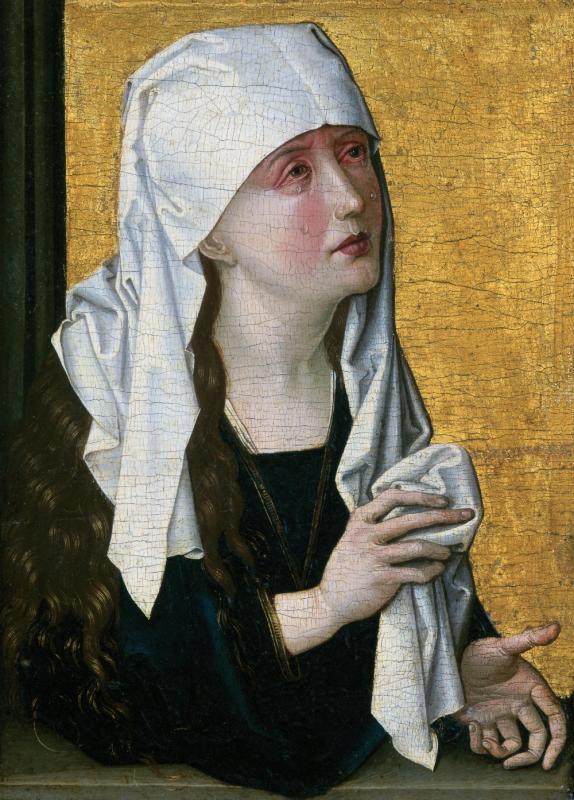
Master of the Stötteritz Altar (German, active late 15th century), Mother of Sorrows, c. 1480, oil on panel, 8 ¾ x 6 ½ in., Gift of Mrs. Clifford G. Schultz in memory of Mr. Clifford G. Schultz, AG.1984.1.1.
This painting is one of only six known works attributed to the anonymous artist, whose identity comes from his association with the Stötteritz Altarpiece, a triptych located in the church at Leipzig-Stötteritz in Germany. His work, including this Mother of Sorrows, exemplifies the heightened realism and emotional drama that characterized Northern Renaissance painting.
With painstaking acuity the artist has articulated the expressive details of the Madonna’s features, costume, and gesture. Her sorrow is explicitly revealed in her red swollen eyes and the tears that fall upon her cheeks. The Madonna extends her left hand out to the viewer in a gesture of intercession, welcoming the prayers of the faithful. This panel was the left half of a portable hinged diptych designed for personal devotion. Traditionally, the subject of the grieving Madonna was paired with an image of Christ as the Man of Sorrows. Mary’s gesture of grasping her mantle can be interpreted as a prelude to wiping the brow of the suffering Christ in the missing panel. The window ledge in the foreground enhances the sense of three-dimensional space, an artistic technique perfected during the Renaissance, whereas the flat, gilded background harkens back to more archaic medieval traditions.
“Sweet and tender – compelling example of Mother of Sorrows. I love the sweet, kind face – her hand out to the suffering people.” – Anonymous
Keep an eye out every week for more visitor favorites. We will be highlighting each of the top fifty pieces during our 50th Anniversary year. If you want a more intimate encounter, stop by the museum and see these masterpieces for yourself!



I disagree. Look at that https://www.catholiccompany.com/emails/020508StaffPicksLent.html Best regards, Margart